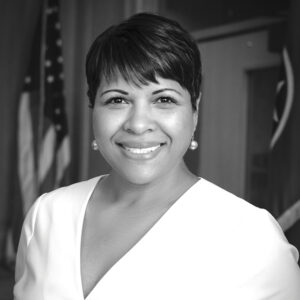Conflict resolution is a skill every leader needs. Where people are involved, conflict will occur, and that’s okay. There are many ways to deal with conflict, and many times, conflict can lead to new solutions or innovations for the company – or personal growth for all involved. Here we asked local experts and executives to share their advice on how they resolve conflict.

Samantha Teter
Executive Director,
Chattanooga Symphony & Opera
I find that the best way to deal with conflict is transparency. It’s difficult to build trust with people, especially employees, without being honest and transparent from the beginning. I’ve found that many times, conflict can easily be resolved when both parties are open about the issues and what their needs are to resolve them. When someone comes into a conflict resolution meeting with a hidden agenda, it prevents the ability to move forward successfully for either party. And while it may be difficult to do, it’s important to not take conflict personally, as the majority of the time, it’s just business. Keeping personal feelings out of it can lead to better results.

Honorable Christie Sell
General Sessions Court Judge
Most importantly, listen! If you are the person charged with resolving a conflict, make sure you give each side the equal opportunity to be heard. Explain that you will not make a decision before you have listened to both sides. Restate to them what you understand the conflict is. Hearing from another person what the issue is may neutralize the situation, make them feel that they are being heard, and maybe even make them rethink their position. Try to find a common ground and identify with their position if possible. If the conflict cannot be resolved, try to reach a logical solution about how to proceed. Sometimes you just have to agree to disagree and move on. If you have to decide the conflict, explain how you reached your decision with supporting facts that you heard from them; if there are rules you are relying on, state those rules and explain how the rules relate to the conflict. Finally, pick your battles – not all conflicts need to be confronted.

Roy Vaughn
Senior Vice President & Chief Communications Officer,
BlueCross BlueShield of Tennessee
I think about it this way: You can’t have a conflict unless you have some common interest. Trying to establish that common interest is a good start. I also recommend never assuming anything about the other party or their motives because assumptions are often wrong. It’s important to work to understand their perspectives by asking good questions and, most important, truly listening to them. When you do, you may discover you’re closer than you think to a resolution. Even if you can’t agree, you may be able to build some respect and trust by taking this active listening approach. At some future point, you may get the opportunity to work together again and, if so, you’ll at least have the makings of a relationship.

Dan Nausley
President,
Sandler Training
Address quickly! 1) Accept the conversation must happen. 2) Get an idea of the root cause, helping you maintain focus on issues and enter conversations in the right mind frame. Leaders, facilitating conflict conversations takes courage. 3) Write down your feelings; then edit, allowing your thoughts to be expressed in a comprehensive and constructive way. 4) Before gathering the group impacted by conflict, take time to anticipate their questions and identify some meaningful solutions. 5) During conversation, be clear about issues and avoid blame or personal attacks. Set boundaries for a healthy, respectful dialogue allowing individuals to collaboratively solve conflict and agree upon a course of action. Lastly, don’t fear conflict. Handled properly, it’s a gift – an opportunity for professional growth and strengthening team relationships.

Candy Johnson
Senior Advisor to Mayor Berke
Conflict amongst groups is inevitable, and leaders must understand that the new shift and greater focus today on building more inclusive environments will bring even more conflict. This should not be viewed as a negative, but rather an opportunity to improve quality outcomes and innovation within organizations. Five strategies that have been helpful to me in managing conflict include: 1) Set the standard that conflict is okay and address it head on. Everyone’s voice is critical. 2) Learn to predict potential conflicts and be open about it on the front end. Challenge others to ask thought-provoking questions when necessary. 3) Practice emotional intelligence: Seek to understand other stakeholder experiences first before attempting to solve problems or developing strategies from only your perspective. 4) Mine for conflict within a team setting or meetings if there isn’t any – if everyone is in agreement without differences exposed, maybe others don’t feel as comfortable being open about opinions, which in turn can stifle creativity and potential impact. 5) Practice the 3 Cs: Communicate, Collaborate, and Cultivate.







